For centuries the people living in India have been engaged in an intellectual exploration of truth. This inquiry into the mystery of life and existence is known as Philosophy.
Six schools of philosophy developed in ancient India. These schools encompass a range of philosophical traditions that originated in the Indian subcontinent. Hindu, Buddhist and Jain philosophies are included in these schools of thought.
It took several generations for these six schools of philosophy to develop with contributions from scores of individual thinkers. Even though these schools differ in systems, we find an underlying harmony in their understanding of truth.
The six orthodox or Astika schools of philosophy are – Samkhya, Nyaya, Vaisheshika, Yoga, Purva Mimamsa and Vedanta. These schools were founded by sages Kapila, Gotama, Konada, Patanjali, Jaimini and Vyasa respectively.
Each school offers its unique perspective on the truth behind human existence, the reality of existence and the original human condition. As we go through this article we can gain insights into the ultimate wisdom of our spiritual ancestors.
Concept of Indian philosophy
The core concept behind Indian philosophy is ‘Darsana’ or intuitive vision. It means wisdom about reality and knowledge of the inner and outer secrets of human life.
Concept of Punarjanma
Punarjanma means rebirth or reincarnation. The premise is that individuals repeatedly pass through many cycles of birth and death. Evolving from being simple organisms to more complex beings and finally into human beings. This cycle of rebirth ends when they achieve salvation or moksha.
Concept of Rina
Rina means debt. There are three types of debt, namely, Guru Rina, Pitru Rina, and Deva Rina. All these are obligations which are to be paid off by a man in his lifetime to attain Moksha or salvation. These debts also ensure a continuity of tradition.
These concepts are based on the belief that man should strive for the fulfilment of four goals. The goals are:
• Artha – material wealth.
• Dharma – moral or religious wealth.
• Kama – emotional fulfilment and pleasure.
• Moksha – liberation.
Six Schools of Orthodox or Astika Indian Philosophy
There are two types of schools of Indian philosophy, the Orthodox school and the Heterodox school. Today we are going to look into the Orthodox school of Indian philosophy. These six schools deal with various aspects of Indian philosophy:
• Cosmology or nature of the world.
• Metaphysics or nature of reality.
• Logic
• Epistemology or nature of knowledge
• Ethics and the,
• Philosophy of religion.
The Orthodox school of Indian philosophy believes that Vedas are the supreme word for attaining salvation. The authenticity of the Vedas is never questioned and it is considered as an authoritative scripture. The Astika Or Orthodox schools of Indian philosophy were written down in medieval times by Brahmanic-Sanskritic scholars. The six schools or Shada Darshana were:
1. Samkhya
2. Yoga
3. Nyaya
4. Vaisheshika
5. Vaisheshika
6. Vedanta
Let’s dive into each of these six schools, their founders and their core philosophies.
Samkhya School of Philosophy:
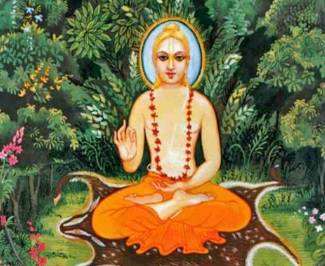
In this school of philosophy, its founder, Kapil Mani teaches that the foundations of reality originate from two basic elements. The fundamental elements are, Purusha or the self, soul or mind, and Prakriti, or matter, creative agency or energy.
The influence of the Samkhya school can be found throughout ancient Indian literature, like the Strutis, Smritis, and Puranas. It is considered to be the oldest school of Indian philosophy.
The foundational text of the Samkhya school is the Samkhya Sutra. It is a significant work and it lays down the fundamental teachings and principles of Kapil Muni.
It believes in Dualistic Realism and emphasizes that Purusha and Prakriti are both distinct aspects of existence.
Satkarya-vada or the theory of causation is central to Samkhya metaphysics. It explains in detail how the universe and all the phenomena related to it arise from Prakriti.
The Samkhya school of philosophy recognizes three main sources of knowledge. These three types of knowledge or Pramana are:
1. Pratyasha or perception. This is knowledge gained through direct sensory experiences.
2. Anumana or inference. This knowledge derivates logical inferences based on the person’s observations and subsequent reasoning.
3. Shabda or hearing. This is the most common form of knowledge gaining. It is knowledge obtained from authoritative sources such as scriptures and other trusted sources of wisdom.
The Samkhya school of philosophy explores the relationship between matter and consciousness and provides insights into the universe by studying its underlying core principles. This facilitates a thorough understanding of nature and its existence.
Yoga School of Philosophy:

The yoga school of philosophy was founded by the great sage Patanjali. It proposes that salvation can only be attained by combining meditation with the physical practice of yoga.
Yoga recognizes the existence of God and considers Him as a teacher who will guide the follower on the right path to liberation.
As per the view of its founder, Patanjali, Yoga is a spiritual endeavour through which one can achieve the control of body, senses, and mind, and is not merely a union. It teaches how to discriminate between Purusha, consciousness, and Prakriti or nature.
In his work, Yoga Sutra, the great sage Patanjali divided yoga into four main sections.
1. Samadhi-pada: It discusses the nature and purpose of concentration.
2. Sadhanapada: studies the various ways in which one can achieve the ultimate goal.
3. Vibhutipada: practices the attainment of supernatural powers through Yoga.
4. Kaivalyapada: explains the reality of the transcendental self and the attainment of liberation.
While Samkhya philosophy deals with the theoretical aspect of realizing the ideals of existence, the Yoga school deals with the practical path towards attaining the union of body, mind and spirit.
Patanjali in his teachings emphasizes the eight spiritual practices or Sadhanas to attain mukti or salvation. These eight sadhanas are:
1. Yama: Teaches self-restraint and ethical principles.
2. Niyama: Developing a positive outlook of conduct and observances.
3. Niyama: Developing a positive outlook of conduct and observances.
4. Pranayama: The practice of breathing exercises to calm the mind by regulating breath.
5. Pratyahara: Focusing on the inward and withdrawing from the outer senses.
6. Dhyana: Practicing meditation and flowing of thoughts inward.
7. Dharana: Concentrating the mind on any one object during meditation.
8. Samadhi: Complete meditation and attain a state of total absorption.
The Yoga School of Philosophy offers a combination of physical discipline, mental focus, and ethical living to attain liberation from worldly desires and facilitate a union with the divine. It enlightens the path to spiritual realization.
The Nyaya School of Thought:
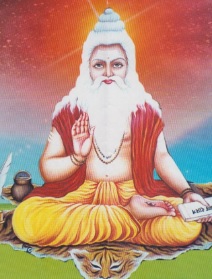
The core philosophy of the Nyaya School of philosophy is to use logical thinking to attain salvation. Its founder is the revered saint Maharishi Akshapaad Gautam.
The key point to note in the study of this school of thought is its belief in logical realism. It also believes that reality can be understood through sustained logical analysis.
The Nyaya School of Philosophy recognizes four distinct sources of true knowledge.
1. Anumana is knowledge based on observance and reasoning to which logical inference has been applied.
2. Pratyaksa is knowledge gained through the perception of senses which is direct.
3. Upamana is knowledge attained through comparison and analogy.
4. Sabda is the knowledge acquired through reliable testimony or authoritative sources.
The Nyaya School of Philosophy theory states that knowledge or cognition is apprehension or consciousness. It teaches that knowledge should reveal both the subject and the object, emphasizing the distinction between the act of knowing itself.
According to Nyaya, God is the ultimate cause of the creation of the world, its maintenance, and its destruction. The concept of God also states that God is eternal and is an infinite being. He can create, sustain and destroy the universe. The world is not created out of nothing but of eternal atoms, space, time, ether, mind and souls.
The Nyaya school approaches its understanding of reality through logical reasoning and analysis. It acknowledges multiple sources of knowledge by exploring its cognitive nature. It seeks to unravel the mysteries of existence and the role of divinity in shaping the Universe.
The Vaisheshika School of Philosophy:
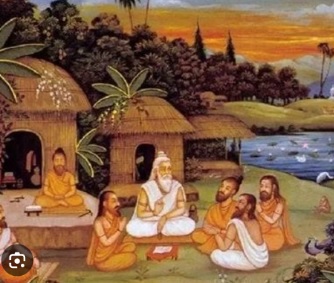
Founded by Kanada, the core philosophy of the Vaisheshika school is that all physical objects in the universe can be broken down into a finite number of atoms. The fundamental force that creates consciousness within these atoms is known as the Brahman.
Vaisheshika school explores the fields of metaphysics and ontology, the nature of existence and its reality. The concept of God in this school closely resembles that of the Nyaya school. It acknowledges that the underlying force behind the working of the Universe is the Supremely Divine being.
The Vaisheshika school believes that each action has a corresponding consequence, which guides the cycle of cause and effect, or the law of Karma.
This school proposes that the universe was created by the interaction of five primary elements known as Dravya. These elements are, fire, water, earth, air and sky or ether.
The study of the Vaisheshika school of philosophy complements other philosophical perspectives. It helps in understanding varied philosophical systems and offers insights into the nature of reality.
The main purpose, or the primary goal of Vaisheshika is to categorize and form a systematic framework to understand atomistic pluralism and the fundamental constituents of its existence.
This school of philosophy also believes that all knowledge must always refer to an object of knowledge or Padartha. It emphasizes the need for categorization and analysis of the same.
With its systematic approach, the Vaisheshika school of philosophy gives valuable insights into the nature of existence and also how everything is interconnected. It explores the universe’s composition, the fundamental elements of reality and the forces that help to shape consciousness.
The Mimamsa School of Philosophy or Purva Mimamsa:
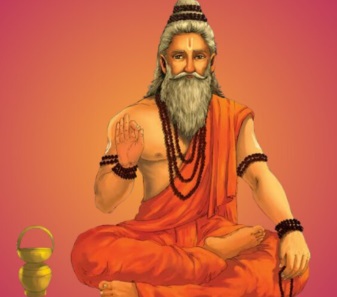
This school of thought was founded by the great sage Jaimini. The main focus on the analysis of interpretation, application of texts and their utilization is the core philosophy of the Mimamsa school. The texts referred to are found in the Samhita and Brahmana portions of the Veda.
The etymological meaning of Mimamsa is a derivation of the term, ‘resolution of some problem through reflection and critical examination.’ It lays stress on the detailed and meticulous analysis of the Vedic texts, and also the rituals they contain.
Development of rituals mentioned in the Vedas is one of the main objectives of Mimamsa along with its precise interpretation and application of rules.
Two foundational texts provide valuable insights into the Mimamsa principles. The Jaiminiya sutra is the foundational work which helps in establishing the principles of Mimamsa philosophy. While Sabaraswami’s commentary, also known as Bhasya, on the Jaiminya sutra adds more insights into Mimamsa principles.
The most influential commentators on the Mimamsa school of philosophy are Kumarila Bhatta and Prabhakara Misra. They are renowned for their commentaries on this subject. They are also the founders of two distinct schools of thought within the Mimamsa philosophy, the Bhatt school and the Prabhakara school.
The elementary work, which offers precious insights into Mimamsa principles, has been authored by Apadeva and is known as Mimamsaanyayaprakasa.
The Mimamsa school of philosophy recognizes five non-perceptual sources of knowledge. They are:
1. Anumana or inference. This is knowledge derived through logical inference.
2. Upamans or comparison. This means knowledge which is gained through analogy or comparison.
3. Sanda or testimony. Any knowledge obtained from an authoritative source, like the Vedas.
4. Arthapatti or postulation. This is knowledge which is derived from a presumed fact which is used to explain a contradiction.
5. Anupalabdhi or non-perception. Knowledge of the non-existence or absence of an object.
With its weightage on interpretation, application and ritualistic aspects of the Vedas, the Mimamsa school provides a valuable and detailed framework for understanding the Vedic texts. The insights offered by the scholars of the Mimamsa school on the subjects of philosophical and practical dimensions of Vedic teachings are considered to be of great value.
Vedanta School of Philosophy:
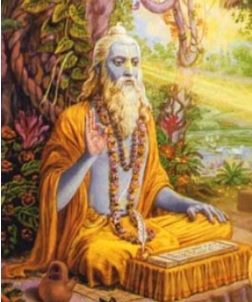
Sage Vyasa the founder of the Vedanta school of philosophy based his teachings on the principle that, Brahman is the ultimate reality of all life, and that everything else is an illusion. Brahman is the individual self or Atma. When an individual realizes his true self, he automatically understands the meaning of Brahman and attains salvation or Moksha.
Vedanta is a Sanskrit word which means the ‘anta’ or the conclusion of the Vedas. The Vedanta school of philosophy emerged from the study, or Mimamsa of the Upanishads.
It strongly believes in the theory of ‘Punarjanama’ or reincarnation. It states that individual human beings undergo many cycles of birth and death. This cycle plays out until the person attains Moksha, liberation or salvation.
The foundational text of the Vedanta school of philosophy is the Brahmasutra of Badrayana, which is based on Vedic philosophy. It is the reason why this school is also known as Vedanta Mimamsa or ‘Reflection on Vedanta.’
This text is also known by a couple of other names like, ‘Uttara Mimamsa’ or ‘Reflection on the latter part of the Vedanta’ and ‘Brahma Mimamsa’ or ‘Reflection on Brahman.’
The Vedanta school of philosophy recognizes three main texts as being fundamental sources of wisdom. They are:
1. Upanishads are texts that explore the elemental truths behind the nature of reality and the nature of self.
2. Bhagavadgita, which is a sacred Hindu text. It studies ethical dilemmas and spiritual teachings through the example of a dialogue between Lord Krishna and the great warrior Arjun.
3. Brahmasutra is a concise text which outlines philosophical interpretations and propositions by presenting a systematic framework for the study of Vedanta principles.
Vedanta School gave rise to several philosophical traditions. The main traditions are:
1. Bhedabheda or the tradition of difference and non-difference. Propounded by Nimbarka it reconciles these two concepts within the Brahman.
2. Advaita or non-dualism. Founded by Adi Shankaracharya, the Advaita Vedanta emphasizes the ultimate identity and explores Brahman’s non-dual nature and the individual self.
3. Vishishtadvaita or qualified non-dualism. It says that although the individual self is a part of Brahman, it retains its distinct qualities and features. It was developed by the Sages Nathamuni, Yamuna and Ramanuja.
4. Madhvacharya founded Tattvavada, Dvaita or Dualism. This school of philosophy stresses the existence of a wisdom which is eternal. It clearly distinguishes between Brahman and the individual self.
5. Shuddhadvaita or pure non-dualism was founded by Vallabha. This tradition believes that all existence is inherent in unity and that Brahman is of pure non-dual nature.
6. Achintya- Bheda-Abheda or inconceivable difference and non-difference. Chaitanya Mahaprabhu introduced this tradition. It highlights the contrasting relationship between the Brahman and the individual self, in the process blending the concepts of difference and non-difference.
Offering a rich plethora of philosophical insights, the Vedanta school explores the nature of reality, the self and the pure truth. With a mix of diverse traditions and valuable teachings, it continues to inspire those who seek the ultimate path to spiritual realization and enlightenment.
Conclusion:
In its quest for truth, Indian Philosophy believes in embracing diversity. These six schools of Indian philosophy are a kaleidoscope of different thoughts and each school offers its unique lens through which one can contemplate the mysteries of nature and its existence. It can be through the analytical precision of Nyaya, Samkhya’s insights or the mystical traditions of Vedanta. Each school of thought invites its followers to go forth on their journey of self-discovery and spiritual realization. The Six Schools of Indian Philosophy, help to illuminate the path of the seeker of truth and Moksha with their wisdom, knowledge and valuable teachings.
Nastika or Heterodox Schools of Indian Philosophy.
The Astika School of Indian Philosophy asserts that it is more important to believe in the teachings of the Vedas than to believe in the existence of God. Nastika School of Indian Philosophy on the other hand does not believe in the supremacy of the Vedas. Heterodoxy is defined as – Veda rejecting.
There are three types of Nastika Schools of Indian philosophy. They are:
1. Buddhism
2. Jainism
3. Carvaka.
Buddhism:
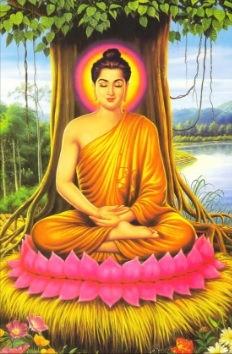
The beliefs in Buddhism are based on the teachings of its founder, Gautam Buddha, also known as Siddhartha Gautama, an Indian Prince in the 5th century BC. The question of the existence or non-existence of God is largely irrelevant in this school. It is mainly non-theistic and is based on the rejection of certain orthodox Hindu concepts of philosophy. However, it does believe in some Hindu concepts, like Karma.
The Buddhist school is the proponent of the Noble Eightfold Path to end the suffering of mankind. The eight principles which help one to attain Nirvana are:
1. Samyak Drishti or the right faith.
2. Samyak Sankalpa or the right resolve.
3. Samyak Vakya or the right speech.
4. Samyak Karmanta or the right action.
5. Samyak Ajiva or the right way to live.
6. Samyak Smriti or the right way of thought.
7. Samyak Samadhi or the correct art of concentration.
8. Samyak Vyayama or the right effort to be undertaken.
The philosophical principles that form the base for this path to be undertaken are known as The Four Noble Truths. They are:
1. Acceptance of the nature of suffering.
2. The origin or cause of suffering.
3. The cessation of suffering.
4. The path which leads to the cessation of suffering.
Buddhist philosophy is an extensive study of metaphysics, phenomenology, ethics and epistemology and their problems.
Jainism:
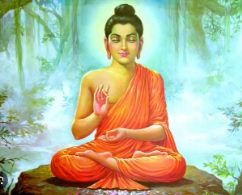
The defining tenets of Jain Philosophy were established by its founder Mahavira in the 6th century BC. Jainism as a religion was already in existence before that.
The Jain Nastika School of Indian Philosophy believes that Nirvana can be attained by practising the principles of the three jewels or Tri-Ratna. They are:
1. Right Philosophy.
2. Right Knowledge.
3. Right Conduct.
The way of the right conduct is to be through the five abstinences. They are:
1. Do not lie,
2. Do not steal.
3. Do not crave luxury and material possessions.
4. Do not be unchaste.
5. Do not injure or the principle of Ahimsa.
The main principle behind the Jainism philosophy is that of Anekantavada. It is similar to the Western concept of Subjectivism and believes that reality can be perceived differently from different angles or points of view and that no single view can be taken as the truth.
Further, only Kevalis or those with infinite knowledge, know the true and full answer. All others only know certain parts of the true answer.
Jainism propagates spiritual independence and the equality of all life forms. It also emphasises that the consequences of one’s behaviour are immediate. It also states that leading a non-violent life and living it with self-control is vital for attaining moksha or salvation of the soul.
Carvaka:
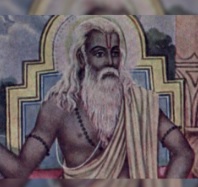
This school of Indian philosophy is also known as Lokayata and was founded in the late centuries BC by Carvaka, the writer of the Brahaspatya Sutras. The original text of these sutras has been lost and only the texts criticizing them, written by other schools, can be found. It was a materialistic, sceptical and atheist school of thought, and died out in the 15th century AD.
The Dhrutta school of Carvakas believed that there was no God and everything was made of the four elements and their atomic combinations. The four elements were air, water, earth and fire. They believed in the existence of the soul but stated that it died along with the body.
According to Carvaka’s philosophy, everything is a combination of fate, environment and one’s nature. There is no other reason for the depravity or purity of man. It denies the free will of man and states that a man is not responsible for good or evil deeds and that one should only try to live joyfully.
Ajivika:
The followers of this school of Indian philosophy are known as Ajivikas. They were a loosely organized group of wandering ascetics like shramanas or sannyasins. Some prominent propagators of this school were Makkhali Gosala and Sanjaya Belatthaputta.
Indian Political Philosophy
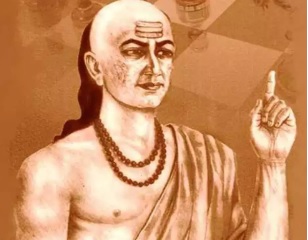
Also known as arthshastra, it was the brainchild of the Mauryan minister, Chanakya in the 4th century BC. It is a deep study of the political philosophy, the craft of managing the affairs of the state, and the formation of economic policies for the betterment of rulers as well as the public. It is studied even today in political courses in India.
Conclusion:
Indian philosophical thought and the Indian schools of philosophy are an amalgamation of different and complex schools. In India philosophical debate started at a time so ancient, there is no written record about it. While the Vedas and the Upanishads gave rise to different schools of thought, the basic quest has always been one. It is the search for Atman, the ultimate truth and its essence.
Interested in becoming a yoga teacher?
Newsletter
Upcoming events and latest blogs